3. January 2018
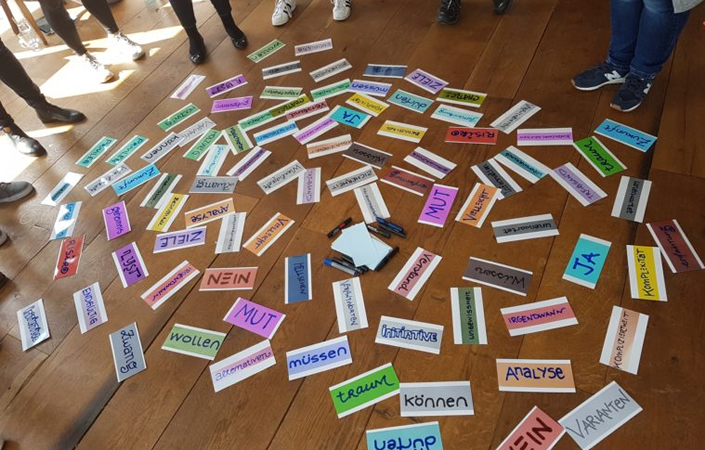
Does »Agility« and »Controlling« fit together? On the ICV ControllingBlog Hans-Peter Sander, Head of the ICV Team PR/New Media, tells about his Agile Culture Coach training that he completed in five modules in 2017 at SYNNECTA. Today: »Agile Teams and Collaboration«
If a company wants to be successful in the market, it needs creative, well-functioning employees. People work well when they enjoy doing it. For this they must find satisfaction in their actions. Above all, they need a meaningful job, a chance to work when and how much they want. And they need recognition from the community. For agile teams: The leadership must provide for appropriate conditions. Because agile work is by no means arbitrary, but has clear frames and orders. – How it all works, the Module IV of the Agile Culture Coach training informs, under the heading »Agile Teams and Collaboration«. Renate Standfest and Fetiye Sisko, both principals at SYNNECTA, both experienced female coaches, guide this elementary, exciting, instructive part of the training, as well as deep insights into the group of participants.
The starting point is the question how an »agile team« is composed, and which factors determine its success. Interesting discussions arise e.g from the outlined ideal of the »cross-functional« and »self-organized« team, in which a so-called »musketeer attitude« (»one for all – all for one!«) prevails, and in which the so-called »bus« factor applies (no head monopolies, pair programming) and work in the »T-Shaped Professionals«; Employees who combine the strengths of a generalist and a specialist.
Many exciting conversations in this workshop, based on Module III »Agile Methods and Scrum«, build the success factors of agile teams:
- Clearly defined job for the team
- Joint learning (for example dealing with a missing hierarchy)
- Role clarity, role uniqueness
- Impediments are identified but ignored
- Retros/Reviews not according to scheme F!
- Key skills: self-reflection, self-criticism, questioning everything!
- »Roles instead of jobs« (flat or no hierarchy, responsibilities)
Fuel for thought provides a lively discussion on the subject of »fundamental orders in social systems«. For example, what are the consequences if »affiliation takes precedence« (in the sense of: »every employee is equivalent«)? All members should be considered in important decisions; also difficult. And is the second »principle of temporal order« (»who is there longer, takes precedence«) not often violated in processes of change, by only favoring and praising what’s new?
The next principle, »Higher commitment takes precedence«, points in particular to the fact that leadership or executives must not be called into question; Managers, however, have to develop their position through greater commitment, leadership skills and behavior. And if the principle, »competence and achievement take precedence«, applies, special achievement, effectiveness, abilities should be shown; how can (power) conflicts arising from this be solved? The next principle, »acknowledging what is«, is to recognize realities that are no longer changeable: saving personal energy, letting go of the old helps to turn to something new. And finally, the principle of »giving and taking« has its deep meaning: where there is a balance between giving and taking, social relations can also harmonize.
Agility and conflicts
In this training module, a lot of place take up conflicts in an agile context. It starts with an interesting discussion on dealing with conflicts concerning culture: corporate, leadership or error culture. It’s intensively taught, as in all components of the training again with playful exercises, how to deal with conflicts within agile teams. The participants experience e.g. something about »systemic consensus«: Instead of using the sledgehammer approach »The stronger wins«, proceeding with the approach »What is important to us together?« and finding a solution. I noted an interesting quote: »The respect for a human being is shown in dealing with his No.«
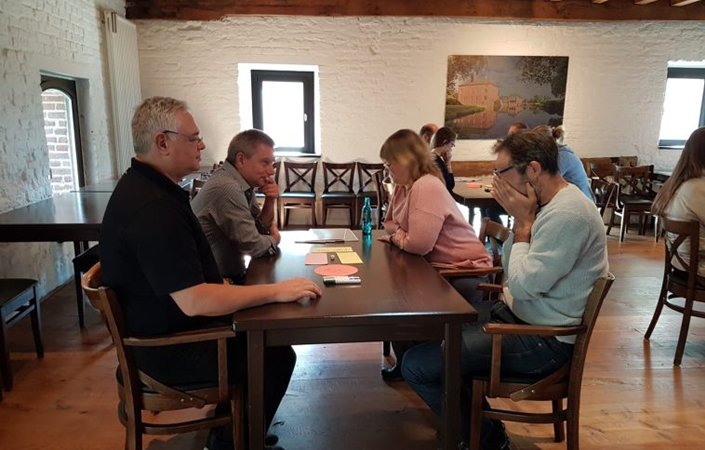
Finally, »Conflict Dojo« is a highlight on the first day of the seminar. In the playful conflict training, the players meet in small groups in several rounds on different character types and must deal with them: from a stubborn resistance through a conflict violent or a compassionate to a solution-seeker. (Picture: role playing at the »Conflict Dojo«)
Diversity: Elementary topic for successful agile teams
An important part of Module IV is »Diversity«. The seminar leaders convince with sensitivity that it is an elementary topic for successful agile teams. They succeed, like a simple-sounding and challenging task of everyday life, in recognizing commonalities and differences, preventing any discrimination, sensitizing them in different exercises. The seminar participants become familiar with creating the necessary transparency in taboo topics and getting to know formal as well as informal rules as well as tools for agile teams.
For example, while working with a »Diversity Insight Picture«, it is about the participants‘ reflection on diversity in themselves, but also in their experience, in the professional world as well as in the world as a whole. In organizations, this can be an analytical tool to explore needs in the context of business goals. It can help in the diversity strategy development and in the change of the corporate culture. In another exercise, the diversity lineup is tested: a highly emotional experience for some participants.
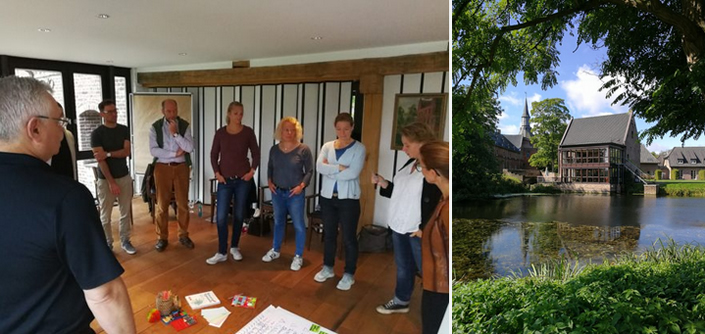
A weekend seminar with many group exercises – in picturesque surroundings, the Seminarhotel Schloss Wissen.
Hans-Peter Sander
blog.icv-controlling.com
20. October 2017
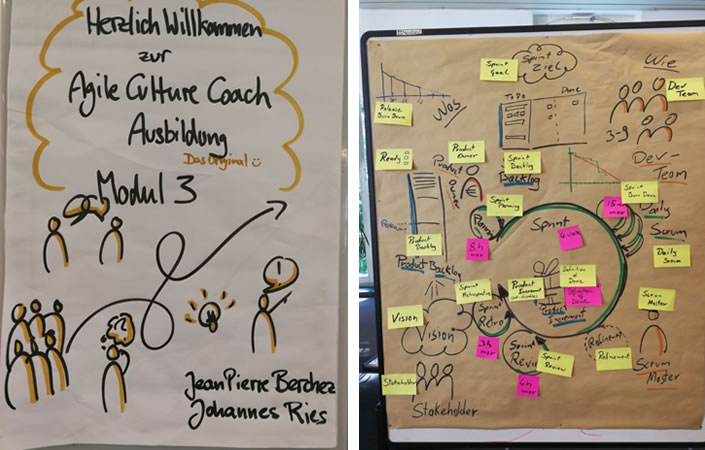
Does »Agility« and »Controlling« fit together? The big Munich »Controller Congress« had the title »Agile Controlling in the digital reality – managing upheavals successfully?«. I received a fantastic offer: Deep immersion into the subject during a professional training to the »Agile Culture Coach«. In contributions to the ICV ControllingBlog, I report about it. Today: Module 3: Agile Methods and Scrum.
The first module 1 of the training, as described here, was focused on »Agile Leadership and Participation«, Module 2 – on the »Agility and Personality« followed in May. Here »The Construct Personality« became the center of interest, and among others we discussed structural and personality tests.
In July Module 3 presented the topic »Agile Methods and Scrum«. Various agile formats, design thinking, strategy tools and conference formats were discussed. We, 14 participants, should learn the logic of agile methods and the most important tools associated with them. Objective: To be able to build Scrum teams in organizations and accompany them.
In the main topic Scrum it was at the beginning about the Scrum framework with roles, artefacts, rules etc., dealing with questions such as emergent architecture and reporting. Scrum teams and the tasks of the Scrum Masters were dealt with in detail. It was also important to pay attention to the fact that another goal of this module was to get the necessary knowledge for a successful examination to the Professional Scrum Master.
For trainers the organizer, SYNNECTA, invited two renowned experts: Jean Pierre Berchez and Johannes Ries. They led us sovereignly and captivatingly through a whole mountain of new knowledge. Berchez (picture) has been familiar with Scrum since 1995. The certified Scrum Trainer and Coach organized a.o. Scrum certification workshops with the inventors of Scrum, Dr. Jeff Sutherland and Ken Schwaber. Johannes Ries helps people in organizations find answers for business planning, strategy and organizational development in the unpredictable VUCA world.
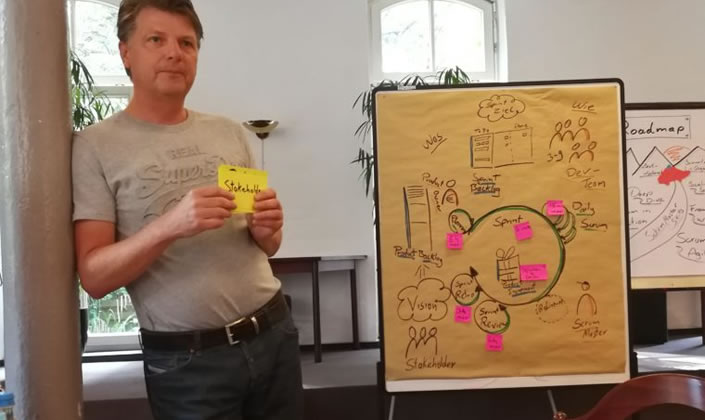
Potentials of teams
Agile teams are VUCA-resilient if they have prepared themselves for any situation by a high degree of diversity and interdisciplinarity. Teams or projects can quickly »swell« and the »task jungle« can quickly become confusing. The team members often work at different locations, possibly even in various time zones. Effective tools for task management are essential.
For »agile project management« the training module focused on Scrum – an agile method for complex development projects. Scrum is effective by combining the ability of the stakeholders to unite their potential. The Scrum concept works for various, clearly defined positions such as product owner, development team, Scrum Master. The Scrum Master, selected from the development team, supports and monitors the entire process for example. The workflows are clearly structured, in a jointly maintained task board and the completed tasks are transparent to the team. We participants learn about different Scrum tools – and try them out on our own fictitious Scrum project. For example, the »Product Backlog«, a list of user stories or requirements maintained by the product owner. There are e.g. the »sprints« – each increment is a time box of as a rule 30 calendar days – and there is the »Sprint Backlog«, a list of tasks that are required to implement the Sprint’s selected product backlog requirements in deliverable product.
Also our training module 3 was divided into (four) sprints. In Sprint 1 we built teams, where we could actively experience Scrum during these two days. In Sprint 2, as a »Scrum Team Member«, we learned to understand the »why« for agile and Scrum, so that we could later use it in our organizations (Why agility? #Cynefin #VUCA #Simulation). In Sprint 3, we learned how to use the Scrum framework effectively (and pass the certificate validation) (#Roles #Practices/Tools #Events #Artefacts #Myths). And in Sprint 4, our teams ran a Scrum practice project where we could experience Scrum in action (#Vision #Product Backlog with User Stories #Prioritizing the Backlog Items #Estimating).
Obvious, but not simple
I understand now the agile procedures and Scrum: by clear prioritizations, e.g. the products that the customer most urgently needs are made available. Deliverable (sub)products are disclosed in e.g. monthly intervals, at the end of each iteration. In the entire product development, the level reached is always transparent at all times. If something goes in the wrong direction or obstacles arise, the entire team can quickly react during the daily checks. This frequent, regular feedback in the daily rhythm ensures continuous improvements, both in the process and in the product.
The basic principles sound plausible, but Scrum is certainly not simple. Trainer and also some students with first Scrum experiences made it clear in exciting discussions that the practical implementation in complex system landscapes and organizations is anything but easy. In practice, there are no homogeneous system environments. And the biggest challenge I see in the necessary changes of the organization for a suitable framework.
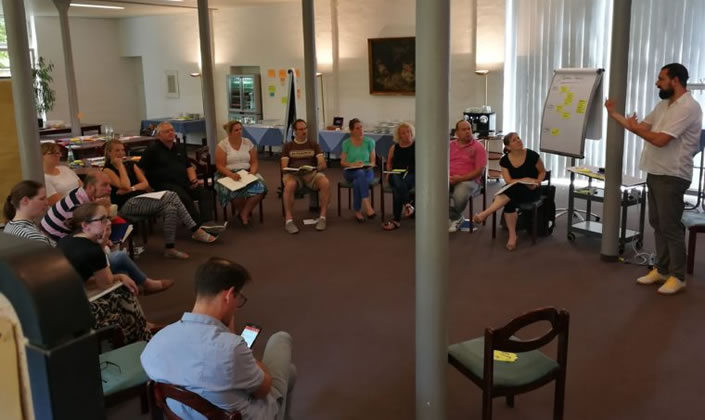
(Reports from other modules of the Agile Culture Coach training will follow.)
Hans-Peter Sander blog.icv-controlling.com
12. September 2017
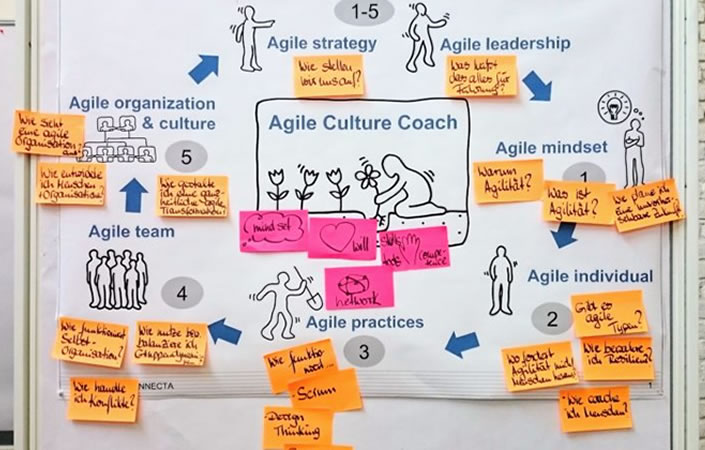
»Agility« and »management control« – that’s a match! Even this year’s large Munich »Controller Congress« agreed when they titled the event »Agile controlling in digital reality: Managing upheavals successfully«, didn’t they? Or is it not a match after all, as some critics raise in discussions time and again? I have a fantastic opportunity: I have been invited to delve deep into the topic with a professional training course to be an »Agile Culture Coach«! These blog contributions will report on my experiences.
This training course takes the form of five modules, which each last several days, over the course of a year: »Agile Leadership and Participation«, »Agility and Personality«, »Agile Methods and Scrum«, »Agile Teams and Conflicts«, »Agile Organization and Culture«. Together with 13 other participants, I am enjoying this training course by and with SYNNECTA, consultants for organizational development and change management in Cologne. It is already the third run of this course: the hosts are visibly proud to be able to name it »the original«.
»Agile Leadership and Participation«
The first three-day-module is titled »Agile Leadership and Participation«. It is a fascinating start which goes far beyond a mere introduction for guidance and terminology. We address »agile strategy« (How to we take position?), »agile leadership« (What does that mean for management?) and »agile mindset« (Why agility? What is agility? How do I plan for an unforeseeable future?)
So, what is »agility«? The views are generally hazy. Our two trainers Renate Standfest and Dr. Johannes Ries are perfectly right to mention that the word »agile« is often even used as an excuse for appointments not kept, responsibilities abused. They make a convincing case, however, that the term has its basis in »valuable thoughts and concepts« that go far beyond »showmanship and bullshit bingo«. It is these notions that give teams, organizations and management a scope for action in the current times, which our trainers describe as a »VUCA situation«.
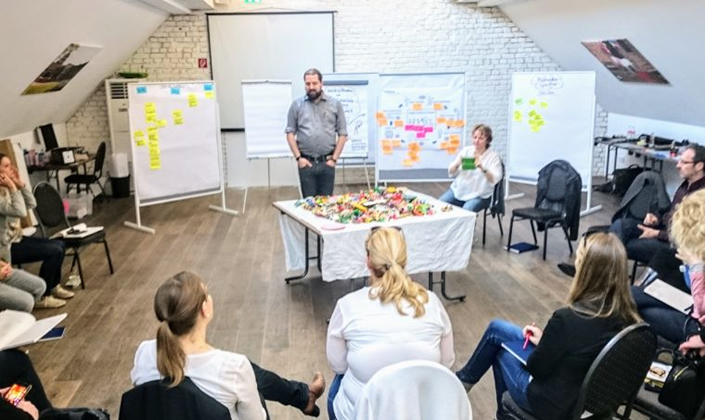
Our »current times«, dominated as they are by digitalization, political upheaval, climate change, etc. are, as is generally known, described as a »VUCA world«. VUCA comprises »volatility« (instability and fast, ground-breaking change), »uncertainty« (even incalculability), »complexity« and »ambiguity« (without simple cause-and-effect relations, ambiguity is on the fore). »Linear methods« no longer apply in this world of VUCA: so what will work?
How are we to understand »agility«? Out course instructors will not provide a »single, 100 per cent« definition. They note the »dimensions of agility« and recommend the »agile manifesto« as a basis. This »Manifesto for Agile Software Development« (it was signed by 17 persons from the field of programming in 2001) points out several key points:
- they consider »individuals and interactions« more important than processes and tools;
- they deem a »functioning product« more important than extensive documentation;
- they explicitly favour »cooperation with the client« over any (contract) negotiations;
- they expressly consider »reacting to change« more important that following a plan.
The SYNNECTA experts derive 12 principles from this manifesto: client satisfaction, openness for change, iterative development, intensive cooperation, focus on a motivating environment, face-to-face communication, functioning products as a measure of progress, steady speed, technical excellence and good design, simplicity, self-organization and self-reflection. »This list is a good summary of the mindset that is necessary for all agile practices and configurations to work«, states Ries.
Effectuation: means guidance, affordable loss and more
The course focuses on agile practices and methods that facilitate the above-named principles. »Scrum«, for example, is a term that comes from software development and by now has entered further fields. This agile method (it will be treated in depth in the third module of the course) is aimed at reducing the »scale of effort« as far as possible.
»Effectuation« is a concept that particularly catches my interest during this first module of my Agile Coach course. Once again, we are addressing hands-on consequences of the changing world, and in particular our world of work. »The dominant theme here is not ›either or‹, it’s ›as well as‹!«, explains SYNNECTA expert Renate Standfest. »With an uncertain future, where the environment can be changed and the aims negotiated, we’re on perfect ground for effectuation.« We are used to problem-solving by way of »linear causal processes«, but now is the time to recognize the circumstances, coincidences and unplanned events as opportunities and deliberately not draw a line. We are presented with a stimulating list of four principles of effectuation:
- Principle of means guidance: instead of choosing or creating the means and ways to achieve a previously defined goal, this means finding goals and results that are achievable within a given set of means.
- Principle of affordable loss: guide your investment at hand of the affordable loss, not the expected result.
- Principle of circumstances and coincidences: circumstances, coincidences and the unexpected should be used as an opportunity rather than being shut out.
- Principle of agreements and partnerships: to be made with those who are ready to take part.
Module I of my Agile Culture Coach training course is filled to the brim with a plethora of highly interesting input. I am convinced that that’s a match for the world of controlling! There is plenty of thought-provoking content on offer in these first three days alone. I had many, many new insights, from dimensions and principles of agility to effectuation, fascinating methods such as landscaping, the Stacey matrix, daily meetup, etc., and even playful elements like the team-building »marshmallow spaghetti contest« as well as the very personal presentations by the individual course participants at hand of Lego and Duplo bricks.

Hans-Peter Sander
blog.icv-controlling.com









